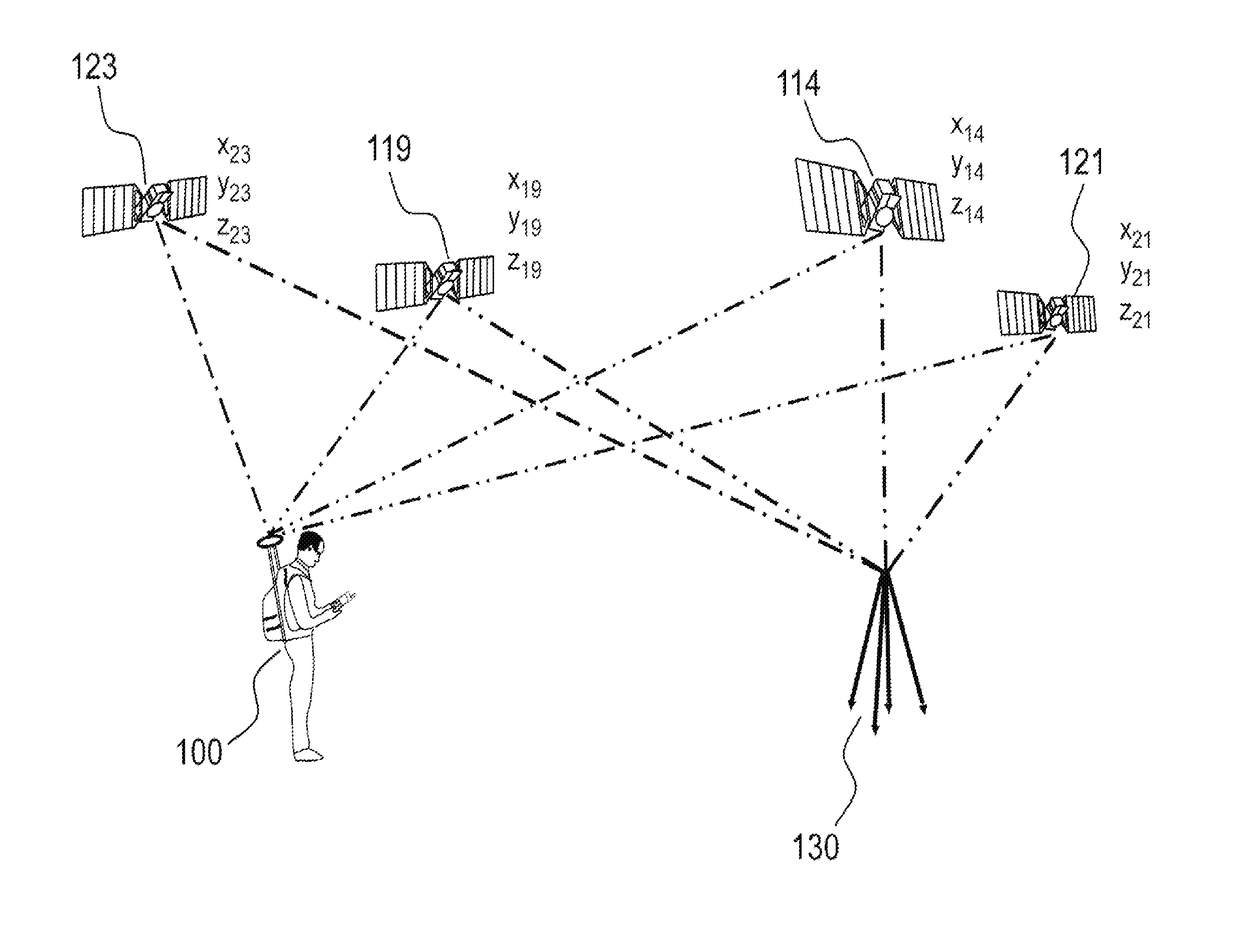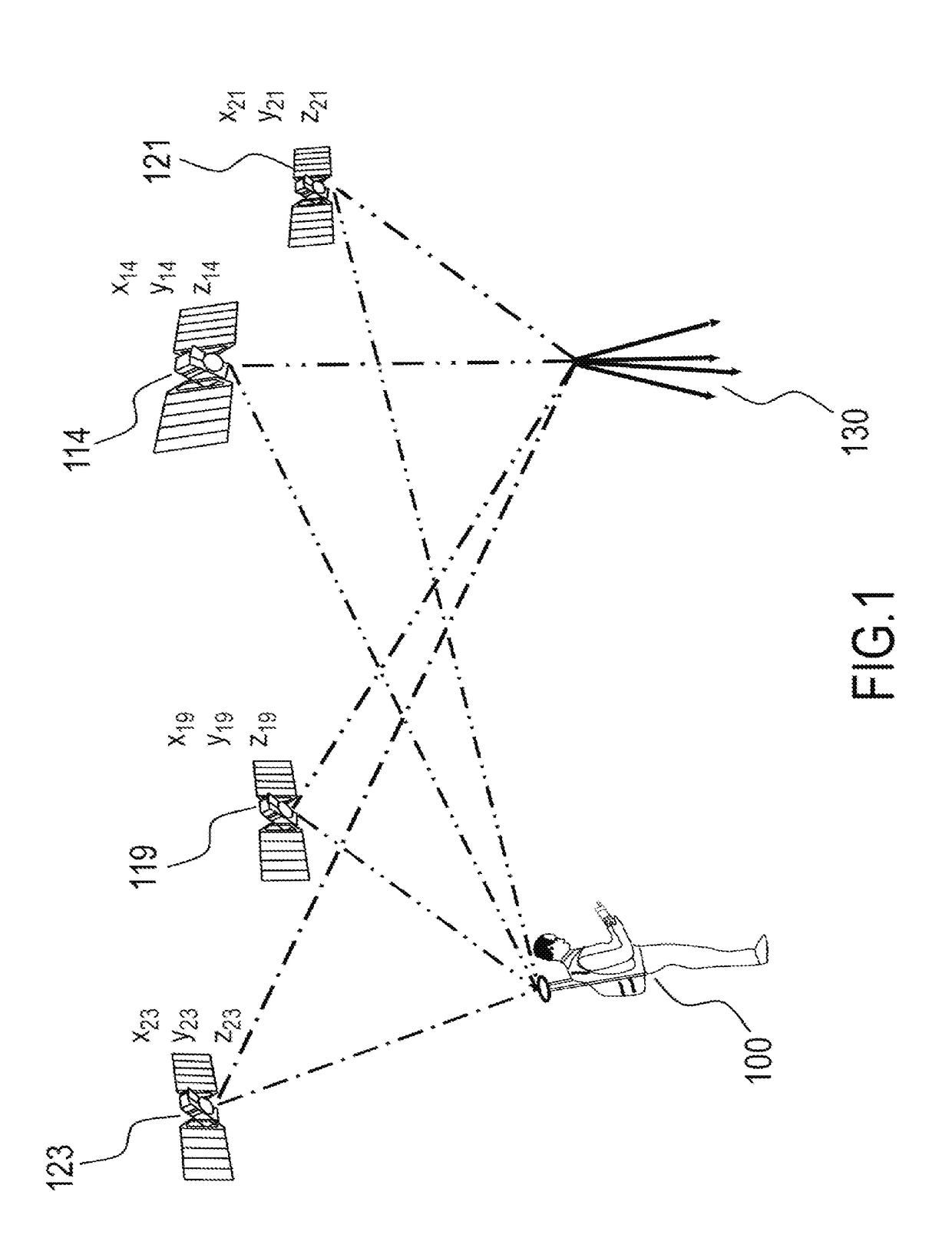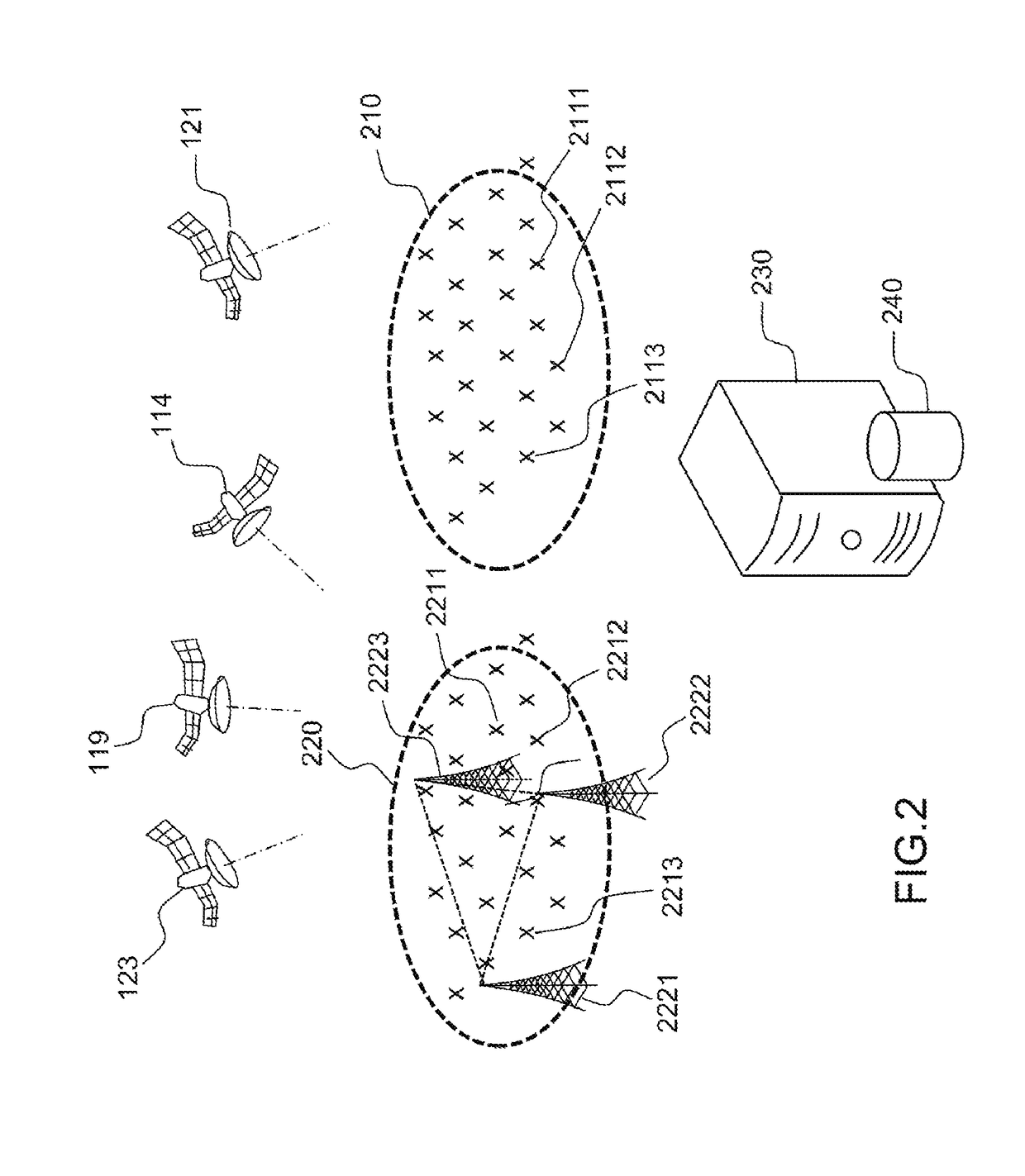Method of collaborative determination of positioning errors of a satellite-based navigation system
a satellite-based navigation system and positioning error technology, applied in satellite radio beaconing, measurement devices, instruments, etc., can solve the problems of limited and expensive solutions, affecting the calculation of pvt data by a receiver on the basis of satellite signals, and the widespread use of dual-frequency receivers by the general public is not yet widespread, so as to achieve faster acquisition of gnss signals and faster convergence of calculation
- Summary
- Abstract
- Description
- Claims
- Application Information
AI Technical Summary
Benefits of technology
Problems solved by technology
Method used
Image
Examples
Embodiment Construction
[0051]FIG. 1 represents a basic view of an RTK system according to the prior art.
[0052]In a positioning system of differential type, a user 100 receives positioning signals for at least one constellation of satellites, 114, 119, 121, 123. The positioning signals for said satellites are also received by a reference station 130. The user 100 can be mobile. The reference station 130 must be fixed, of precisely known position and situated in a radius of about 10 to 20 km from the user (see http: / / www.navidedia.netiindex.php / RTK Fundamentals).
[0053]An algorithm of RTK type can be implemented by using the code, the phase or a combination of the two, if appropriate with variable weightings. The precision is better when the phase is used, since its measurement is less noisy than that of the code, at the price of greater complexity, notably in order to remove the cycle ambiguity.
[0054]The basic equation of an algorithm of RTK type uses the following expression for calculating the phase cis o...
PUM
 Login to View More
Login to View More Abstract
Description
Claims
Application Information
 Login to View More
Login to View More - R&D
- Intellectual Property
- Life Sciences
- Materials
- Tech Scout
- Unparalleled Data Quality
- Higher Quality Content
- 60% Fewer Hallucinations
Browse by: Latest US Patents, China's latest patents, Technical Efficacy Thesaurus, Application Domain, Technology Topic, Popular Technical Reports.
© 2025 PatSnap. All rights reserved.Legal|Privacy policy|Modern Slavery Act Transparency Statement|Sitemap|About US| Contact US: help@patsnap.com



